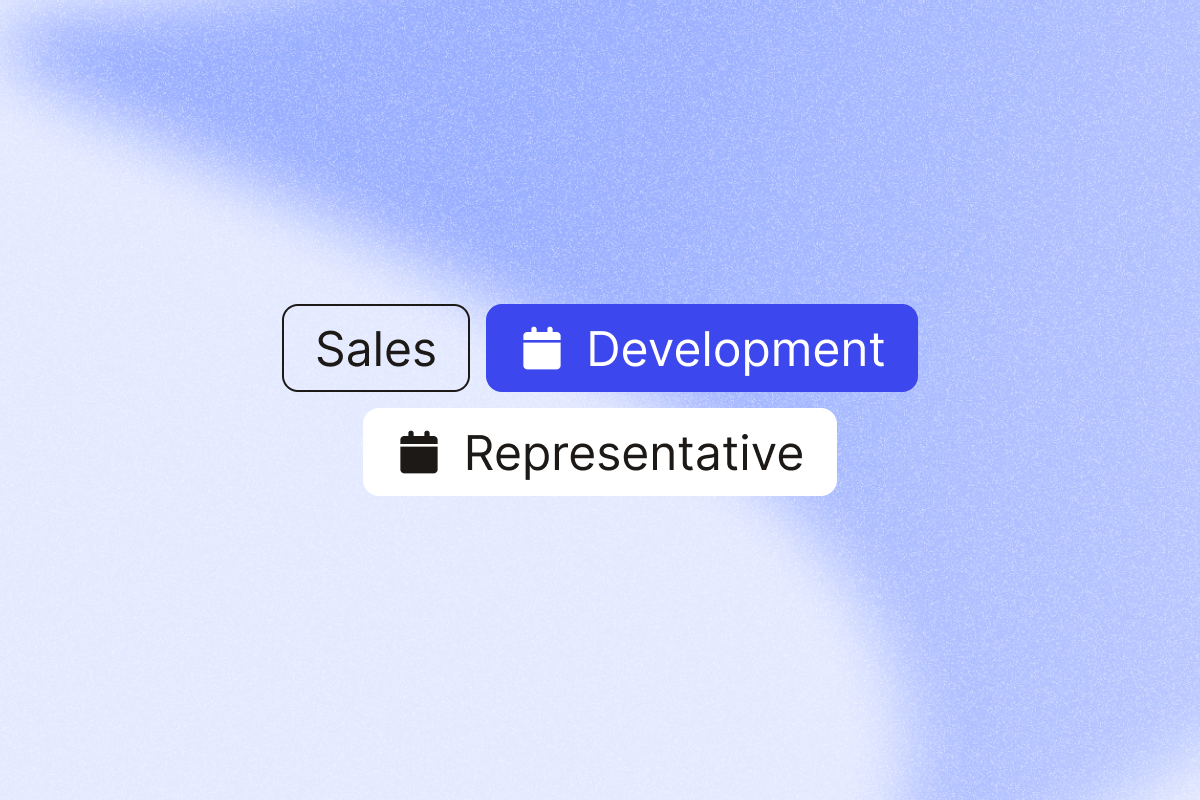Sales Development Representatives (SDRs) play a huge role in lead generation. Their job is to find and qualify leads so sales teams can concentrate on closing deals.
Let’s talk about what they do and why it matters.
AI highlights
- SDRs manage the early stages of the sales process by prospecting, identifying qualified leads, and building relationships to create a strong sales pipeline.
- Their responsibilities include finding sales opportunities, qualifying leads, booking meetings, and understanding prospects’ needs to optimize the sales funnel.
- Key skills for success include active listening, research, prospecting, communication, and time management, all aimed at building trust and maintaining a strong pipeline.
- SDRs can work smarter by prioritizing intent-driven leads, building trust through social selling, learning from industry leaders, and using AI tools like PhantomBuster to automate and streamline lead management.
- Sales reps can boost productivity using sales prospecting platforms for finding and qualifying leads, AI sales assistants to automate outreach and personalization, and CRM software to manage pipelines and track interactions effectively.
| SDR Responsibility | Description | Top Tip | Recommended Tool |
| Finding potential customers | Identifying and targeting the right audience to build a strong sales pipeline. | Use social media to find high-potential leads. | PhantomBuster, LinkedIn Sales Navigator |
| Qualifying leads | Ranking leads based on how likely they are to convert into customers. | Automate lead scoring based on engagement and demographic data. | PhantomBuster, 6sense, Clearbit |
| Reaching out to qualified leads | Sending personalized outreach to qualified prospects to engage and nurture the relationship. | Tailor your message to address specific pain points and needs according to their LinkedIn activity. | PhantomBuster, Lemlist, Outreach.io |
| Booking meetings and sales demos | Scheduling meetings or demos with qualified leads to present solutions and move them down the funnel. | Automate meeting booking with integrations to minimize scheduling friction. | Calendly, Doodle, Piper by Qualified |
| Building relationships | Nurturing leads by continuing to engage and build rapport through ongoing communication. | Be consistent in follow-ups to maintain strong relationships. | HubSpot, Pipedrive |
| Identifying needs or pain points | Understanding the challenges or pain points of your leads to offer tailored solutions. | Use AI tools to analyze behavioral data and pinpoint key issues. | Crystal, Gong.io |
| Building a strong sales pipeline | Ensuring a steady flow of leads by continuously adding qualified prospects into the sales funnel. | Regularly refresh your pipeline with new prospects and nurture existing ones. | Pipedrive, Salesforce |
What is a Sales Development Representative (SDR)?
A Sales Development Representative (SDR) is responsible for managing the early stages of the sales cycle.
Their role involves prospecting, identifying qualified leads, and nurturing relationships to build a strong sales pipeline.
Unlike account executives, SDRs don’t focus on closing deals. Instead, they handle top-of-the-funnel activities like reaching out to potential clients, understanding their needs, and booking meetings to pass them on to the sales team.
This makes them an essential bridge between marketing efforts and sales success.
What does a Sales Development Representative do?
A Sales Development Representative plays a vital role in fueling and optimizing the sales pipeline.
Their main responsibilities include identifying potential customers and sales opportunities, qualifying leads, and booking meetings or sales demos for the sales team.
SDRs engage with prospects to understand their needs and pain points, helping build relationships and trust early in the sales process.
With these top-of-the-funnel activities, SDRs set the foundation for success so the sales team can work with the best deals.
What skills does an SDR need?
A Sales Development Representative role requires unique skills to successfully connect with prospects, build trust, and create a seamless sales pipeline for the team.
They might not be listed on the job description, but mastering communication, honing active listening, or leveraging creativity are essential abilities for facing the challenges of modern sales and standing out in a competitive market.
Active listening
Active listening isn’t just a nice-to-have—it’s a must-have. In a LinkedIn poll by Donald C Kelly, 64% of respondents voted active listening as the most important skill for a successful salesperson.
And it’s easy to see why! Listening closely to your prospects (and your existing customers) helps you uncover their pain points, understand their needs, and respond in a way that adds value.
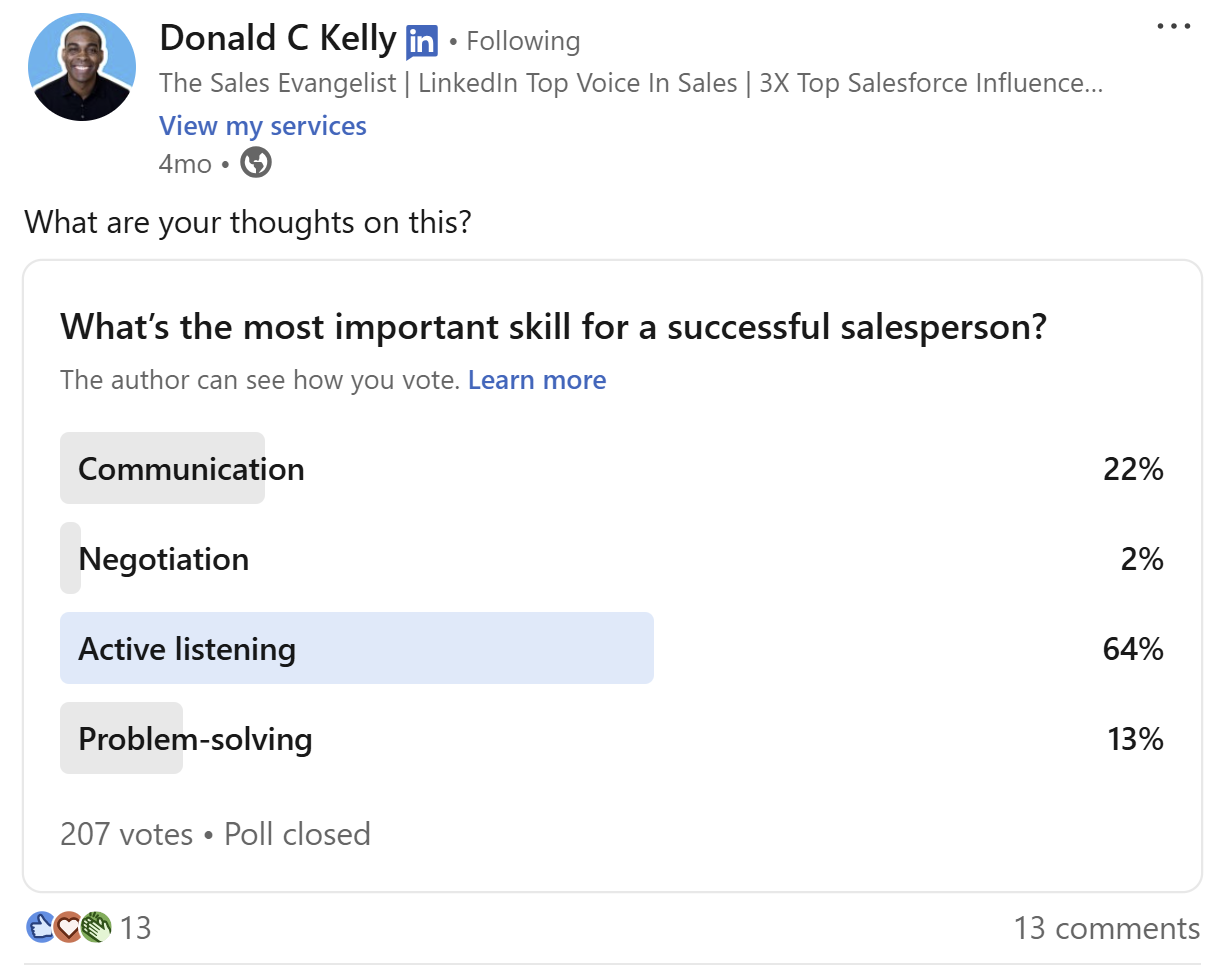
For example, if a prospect casually mentions a specific challenge, a skilled SDR can pick up on it, ask thoughtful questions, and position their product as a solution.
Plus, showing that you genuinely listen builds trust and sets the tone for a positive relationship.
💡 Quick tip: Try repeating what the prospect says or asking follow-up questions during calls. It’s an easy way to show you’re paying attention—and to keep the conversation flowing.
Research skills
Effective sales begins with knowing your audience, their needs, and pain points.
As the sales leader Pius O. highlighted in a recent LinkedIn post, trying to sell “sand in the Sahara” misses the mark because it doesn’t solve a real problem they are trying to solve.
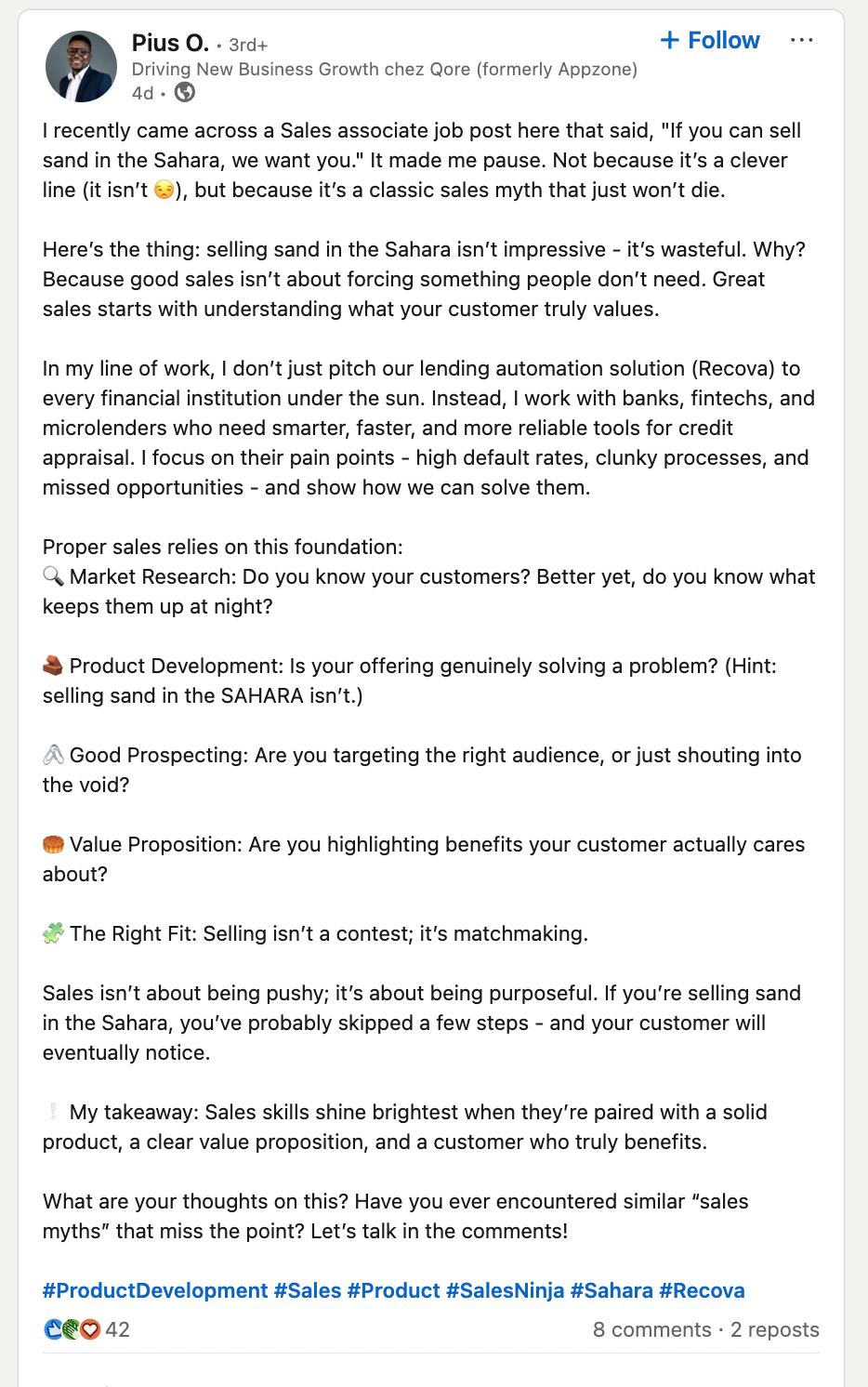
To stand out, you need more than surface-level information. The key is understanding your ICP and focusing on what they need.
Look into their pain points, track industry trends, and stay aware of competitor activity. This context helps you craft relevant and valuable outreach to your prospects.
💡 Pro tip: Leverage tools like LinkedIn Sales Navigator to gather precise insights about your audience. As Pius O. puts it, good sales start with good research.
Prospecting skills
Prospecting is a key responsibility for SDRs, and mastering it strengthens your pipeline.
Focus on finding leads that match your ICP and align with your goals. Dig into details like their role, business challenges, and objectives to craft messages that resonate.
Instead of generic outreach, mention a recent milestone their company hit or address a specific pain point they’ve shared online.
The more personalized your approach, the more trust you’ll build—and the better your response rates will be.
💡 Tip: We recommend using tools like PhantomBuster’s LinkedIn Activity Extractor to keep an eye on your leads by extracting posts and other activity from a list of LinkedIn profiles.
Communication skills
Strong communication skills are essential for SDRs to build trust and connect with prospective customers.
In this LinkedIn post, Tom Lavery highlights that effective selling hinges on authentic communication—talking like a friend, listening deeply, asking insightful questions, and sharing compelling stories to inspire action.
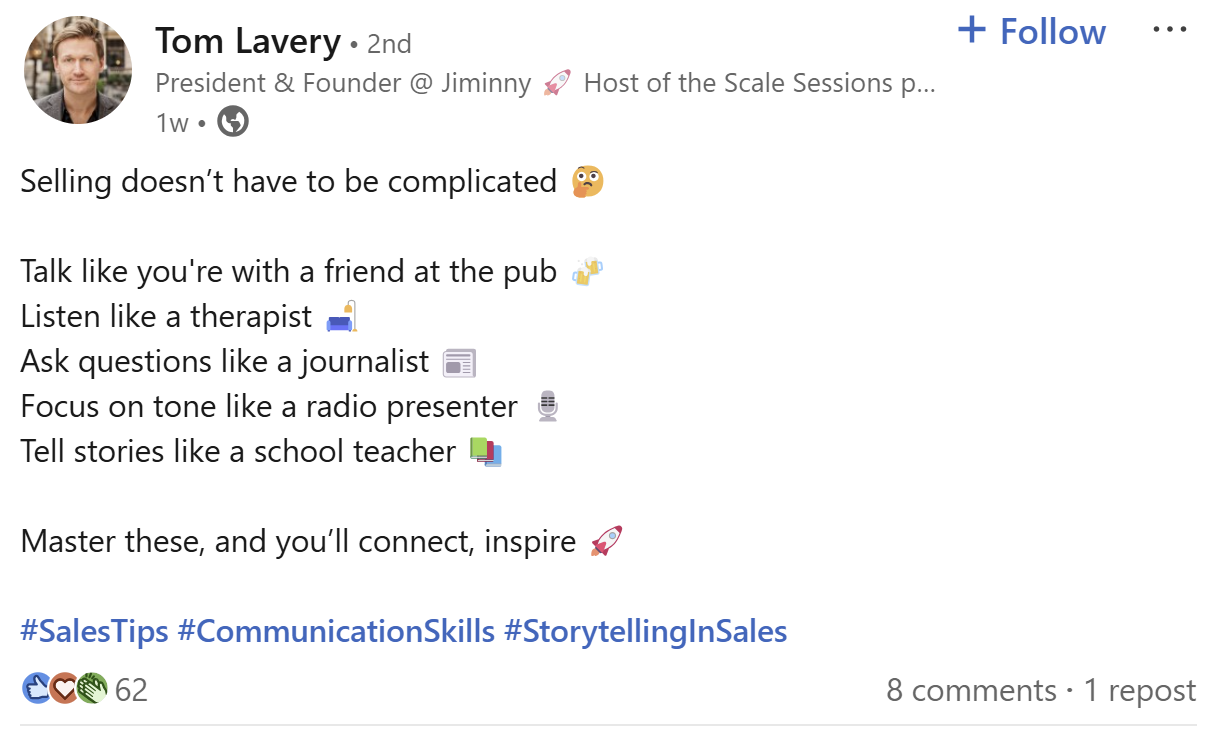
To improve your communication, focus on listening more than speaking, asking thoughtful questions, and summarizing key points to show you’ve understood.
You can make conversations more engaging and natural by adjusting your tone and style.
💡 Tip: Use relatable language and storytelling to create genuine connections with prospects, making them feel valued and understood.
Resilience and persistence
Rejection is a part of every SDR’s day, and that’s where resilience and persistence come in.
As Nidhi Jain, CEO of CloudEagle.ai, highlights in this LinkedIn post, a good SDR doesn’t get discouraged easily. Instead, they stay motivated, consistently trying to reach new prospects and generate opportunities.
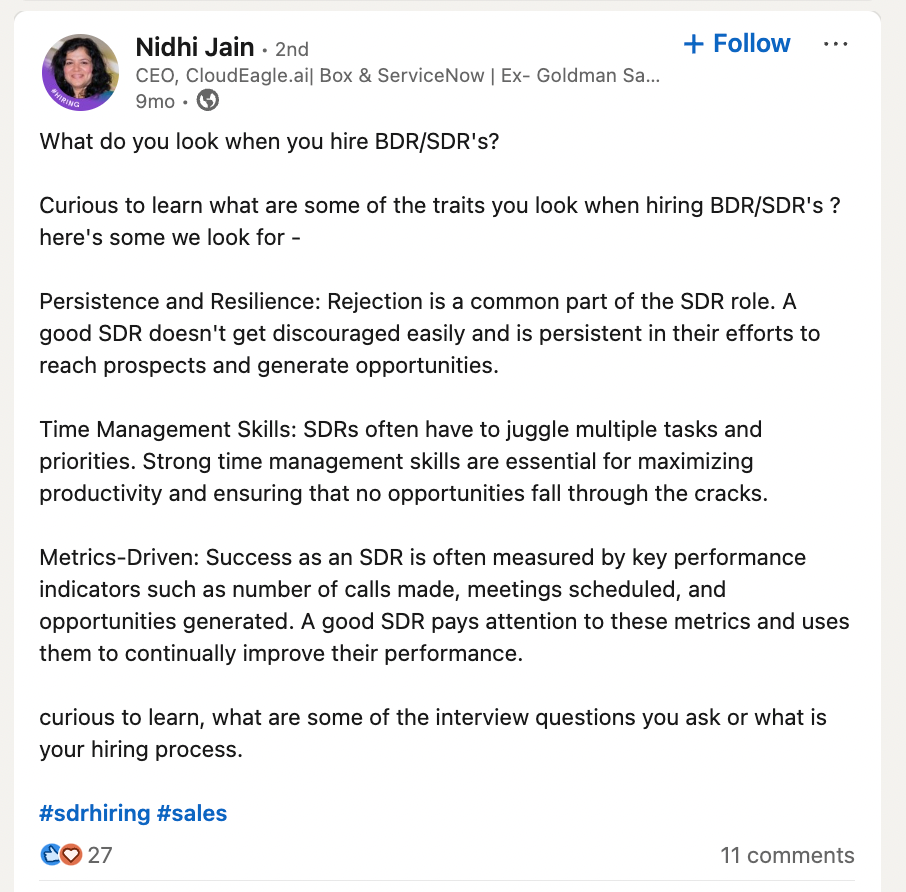
For example, when an email goes unanswered, or a cold call doesn’t connect, resilient SDRs shift their strategy and keep moving forward. Staying consistent while respecting the prospect’s time is key.
💡 Quick tips:
– Use rejection as feedback—identify areas to refine for your next attempt.
– Create measurable daily goals, like scheduling meetings or completing follow-ups.
– Celebrate small achievements to maintain energy and focus.
Product knowledge
Strong product knowledge helps SDRs communicate value with confidence. Listing features isn’t enough—prospects need to understand how the solution addresses their specific challenges.
In this LinkedIn post, Carmella Kettner, VP of Global Sales Development, highlights that top SDRs use a structured approach to mastering their product so they can become experts and answer questions clearly and with confidence.
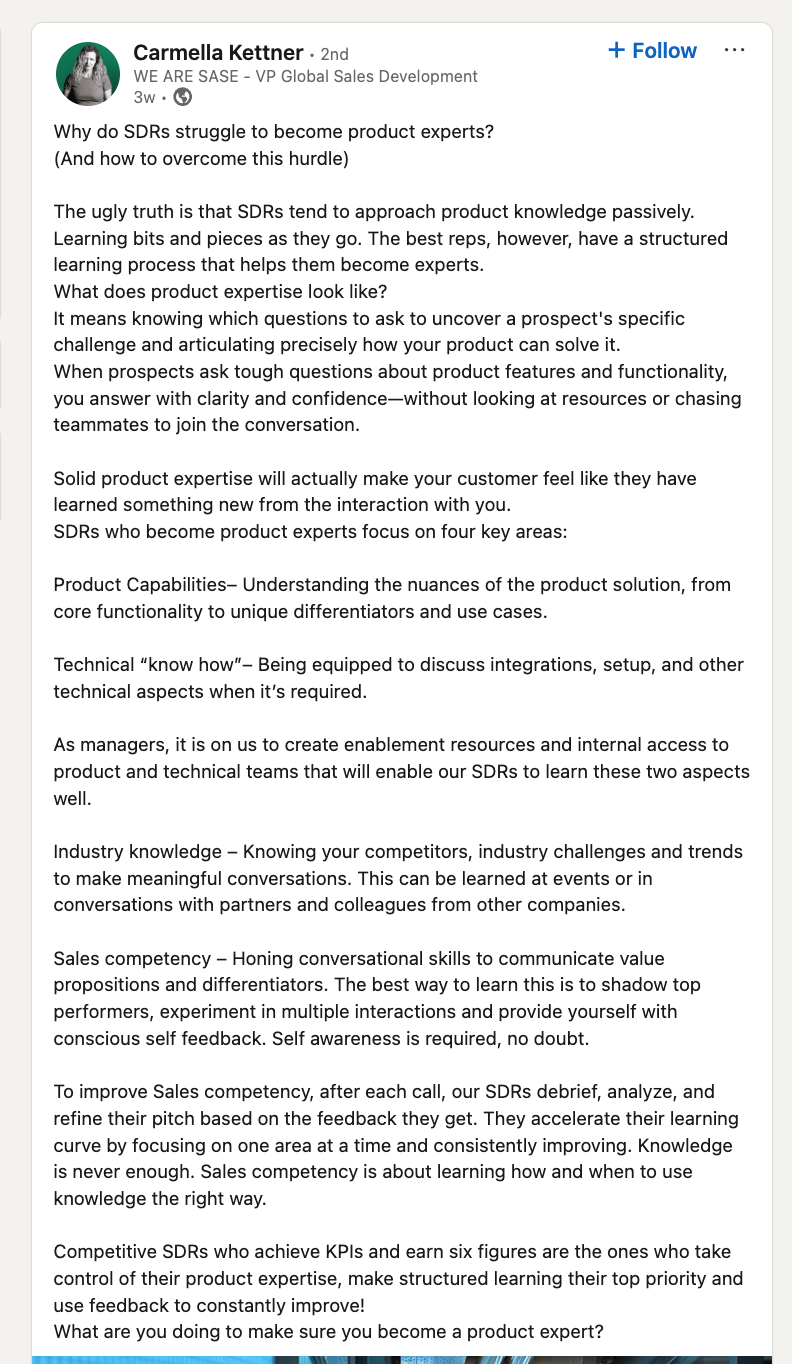
Key areas to focus on include:
- Product capabilities: Understand core functions and unique differentiators.
- Technical know-how: Be ready to discuss integrations or setups when needed.
- Industry context: Stay informed on trends and competitors to add value to conversations.
💡 Best practices: Shadow experienced reps, refine your messaging after every call, and treat product expertise as an ongoing essential process. Mastery here helps you build trust and stand out in conversations.
Time management
Managing time well is essential for SDRs who balance prospecting, follow-ups, and scheduling. Without structure, opportunities can slip away, or efforts may go to waste.
Plan your day in focused blocks for specific tasks like prospecting, outreach, or admin work.
Leverage automation for repetitive tasks with tools like PhantomBuster to free up more time for engaging with leads.
Finally, track your progress using a customer relationship management software (CRM) or task manager to stay on top of your pipeline and avoid losing track of leads.
Small changes in how you organize your time can make a measurable difference.
Top tips for sales development reps’ success
Success as an SDR comes down to working smarter, not harder.
The right strategies and tools can help you identify better leads, connect with prospects more effectively, and make the most of your day.
These tips focus on practical, actionable ways to elevate your performance and hit your goals.
1. Generate leads based on intent signals
Focusing on intent data helps you prioritize leads that are actively interested in what you offer.
These buying signals include changing jobs, attending relevant industry events, downloading whitepapers, or engaging with industry content online—clear signs they’re already exploring solutions or looking for specific information.
PhantomBuster’s LinkedIn Event Guests Export makes it easy to identify these leads.
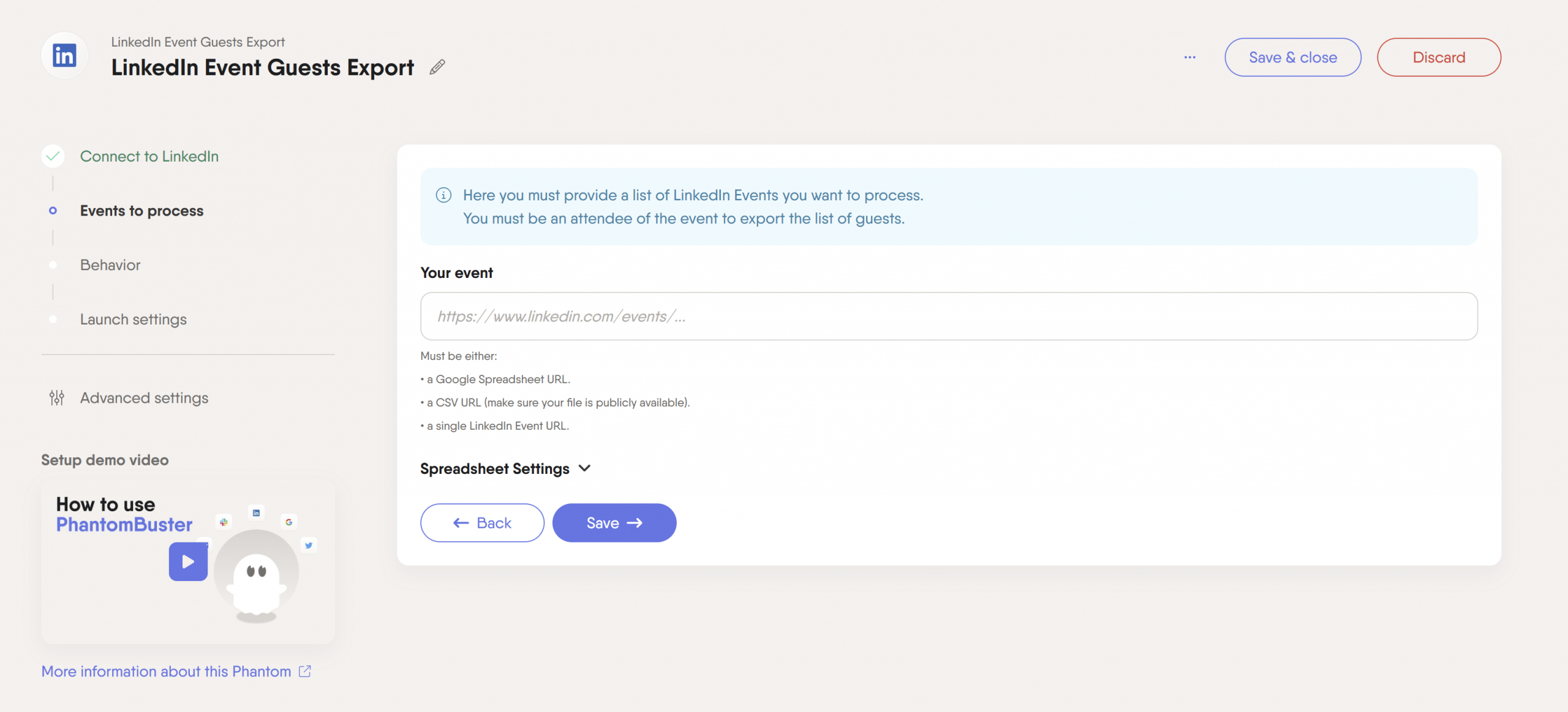
It lets you extract attendees from LinkedIn events in your niche so you can target them with personalized outreach.
You’ll be reaching out to people who are already interested, and you can highlight that event as a strong starting point and a place for common ground.
2. Leverage social selling
Social selling is about building genuine relationships with prospects through platforms like LinkedIn.
It’s not a hard sell; it’s about sharing valuable insights, engaging with content, and establishing yourself as a trusted resource.
Why does it matter? According to LinkedIn, social selling leaders create 45% more opportunities, are 51% more likely to hit their quota, and 78% of them outsell peers who don’t use social media for the sales process.
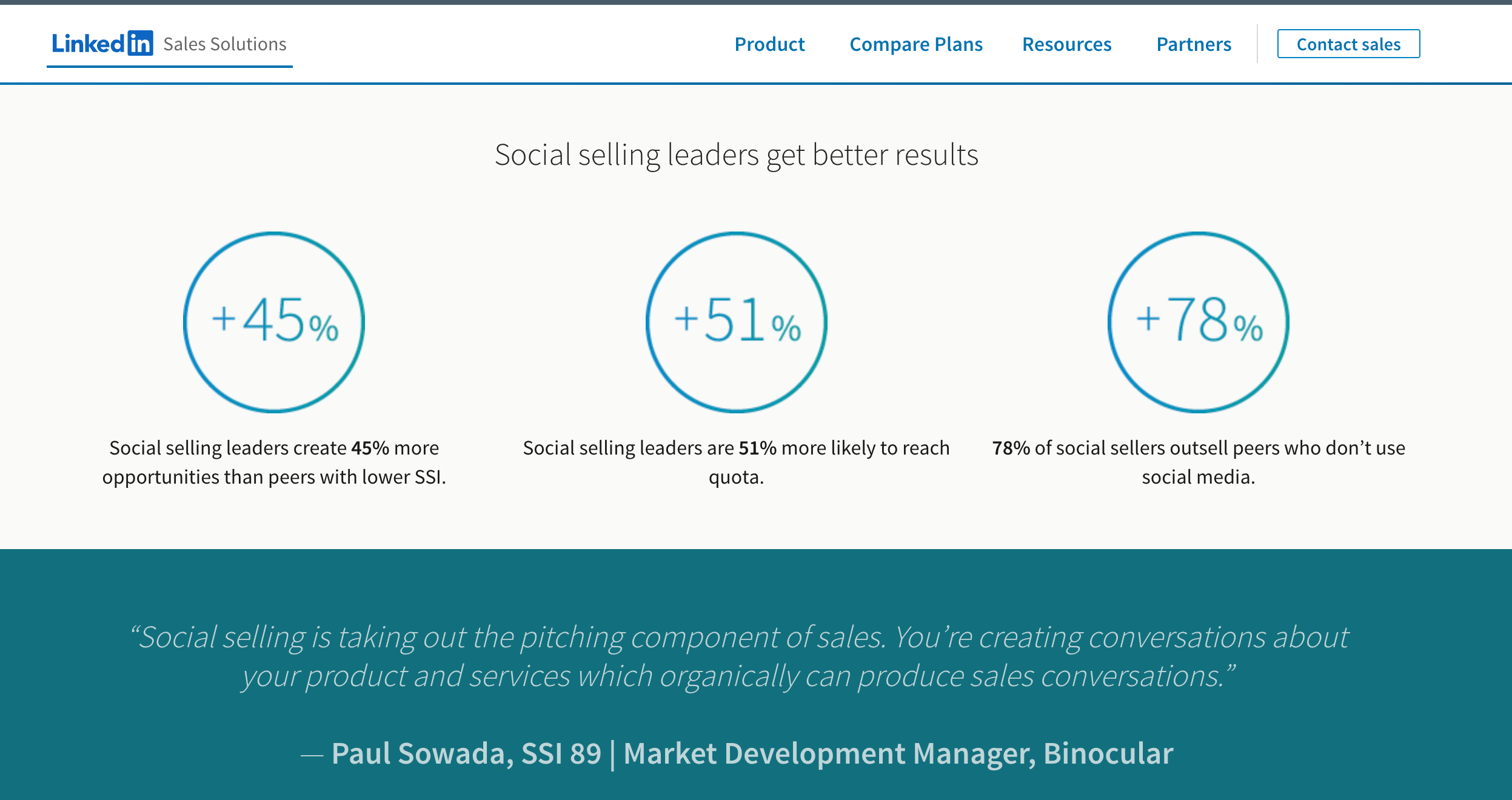
To get started, focus on increasing your Social Selling Index (SSI) score, a LinkedIn metric that measures how effectively you establish your professional brand, find prospects, engage with insights, and build relationships.
From there, you can start with small actions like optimizing your LinkedIn profile to develop your personal brand, interacting with key industry leaders or prospects, and developing a strong content strategy to share your insights.
3. Learn from industry leaders
One of the best ways to improve as an SDR is to learn from sales experts or sales organizations who regularly share actionable advice.
Following their content can provide new strategies, techniques, and perspectives to refine your approach.
Here are a few industry leaders you can follow on LinkedIn:
- Morgan J Ingram: Known for sharing insights on SDR training and prospecting strategies.
- Becc Holland: Focuses on personalization in sales and crafting authentic content.
- Josh Braun: Offers templates, cold outreach advice, and objection-handling tips.
For example, check out this post from Josh Braun—it breaks down an effective cold email example, highlighting the psychology behind each part.
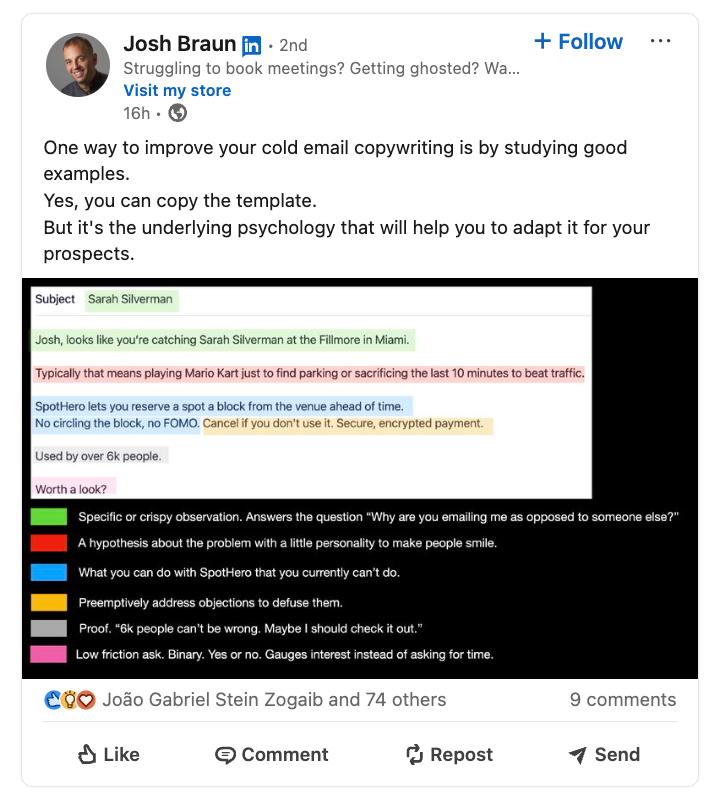
4. Use AI to automate your sales workflows
AI tools can take the manual grind out of sales, making tasks like prospecting and lead qualification faster and smarter.
You can focus your efforts where they matter by analyzing data and identifying prospects who are more likely to convert.
Here are some examples of AI-powered tools you could use to qualify your leads:
- PhantomBuster’s Advanced AI Enricher: It can look at your lead list, compare it to your ICP, and flag the best matches for you. All you have to do is create a prompt that spells out your ideal lead.
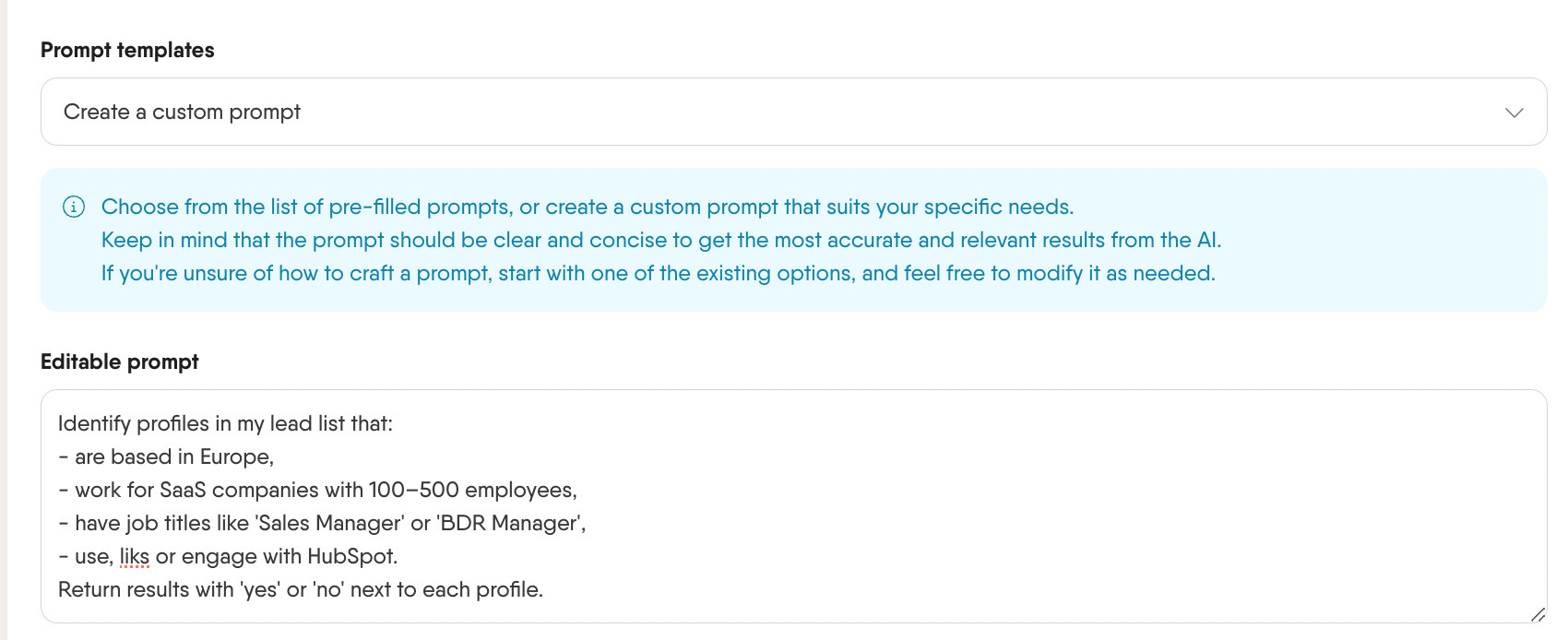
- HubSpot’s AI-powered lead scoring: It ranks leads based on conversion likelihood using predictive analytics, so you know exactly who to reach out to.
- Apollo.io’s AI sales assistant: Combines lead enrichment and scoring, helping you easily identify and engage high-priority prospects.
And when you pair these tools with your CRM, you can create an automated process that integrates AI insights into your outreach strategy.
Essential tools for sales reps’ success
The right tools can take a lot of the busywork off your plate, allowing you to focus on making connections.
Here’s a quick rundown of essential tools to help you work more efficiently and get better results.
Sales prospecting tools
Prospecting doesn’t have to take all day.
Sales prospecting tools like these make it easier to find and qualify leads:
- PhantomBuster: This tool is best for finding top-quality prospects and qualifying them. It automates time-consuming tasks like extracting a list of LinkedIn group members and enriching data to qualify leads.
- LinkedIn Sales Navigator: Use its advanced filters and search operators to zero in on the right prospects—think job titles, industries, and company size—and track engagement to see who’s worth reaching out to.
AI sales assistants
AI-powered sales assistants can handle tasks like lead enrichment, outreach personalization, and even follow-up scheduling, giving you more time to focus on connecting with prospects.
Here are a few examples:
- Reply.io’s Jason AI: A virtual sales assistant that handles email outreach and follow-ups. It generates personalized messages and responds to leads, keeping the conversation moving.
- AiSDR: A powerful AI-driven sales assistant designed to handle lead discovery, qualification, and outreach with minimal manual effort.
- Salesforce Einstein: Offers predictive lead scoring and personalized insights to prioritize high-potential opportunities.
CRM tools
CRM tools organize your pipeline, track prospect interactions, and ensure you follow up at the right time. This helps you stay focused on high-priority leads.
Whether managing a handful of leads or juggling an entire pipeline, a CRM ensures you never miss a follow-up or lose track of a deal.
Here are some strong CRM tools:
- HubSpot: One of the best CRM tools out there, it helps you track your business relationships in one spot, manage your sales pipeline, and stay on top of customer interactions.
- Pipedrive: Known for its simple, visual interface, Pipedrive makes pipeline management easy and intuitive, especially for smaller teams.
- Zoho CRM: A well-rounded CRM with strong automation and reporting features, ideal for sales executives looking for flexibility at an affordable price.
- Freshsales: Part of the Freshworks suite, this CRM focuses on lead scoring, AI-driven insights, and email tracking to help sales teams close deals faster.
Sales Development Rep FAQ
How much should an SDR make?
Sales Development Representative (SDR) salaries vary based on experience, location, and company size.
Here’s a quick breakdown:
- Entry-level SDRs: Typically earn between $45,000 and $60,000 annually.
- Mid-level SDRs: With a few years of experience, salaries often range from $60,000 to $80,000.
- Senior SDRs or SDR Managers: Experienced professionals can earn over $80,000, with total compensation (including bonuses and commissions) potentially exceeding $100,000.
How do SDRs measure success?
SDR performance is typically measured using KPIs that reflect their impact and productivity on the sales pipeline.
Common KPIs include:
- Meetings set: The number of qualified meetings booked for the sales team.
- Opportunities created: How many leads are converted into viable opportunities.
- Outbound activities: Volume of emails, calls, and outreach made to prospects.
- Conversion rates: The percentage of leads successfully moved to the next sales stage.
Tracking these metrics ensures SDRs are aligned with team goals and delivering measurable value.
How can SDR sales evolve in their career?
As Noam Nisand explained in his LinkedIn post, traditional SDR career paths—transitioning to Account Executive (AE) roles or becoming team leaders—are evolving.
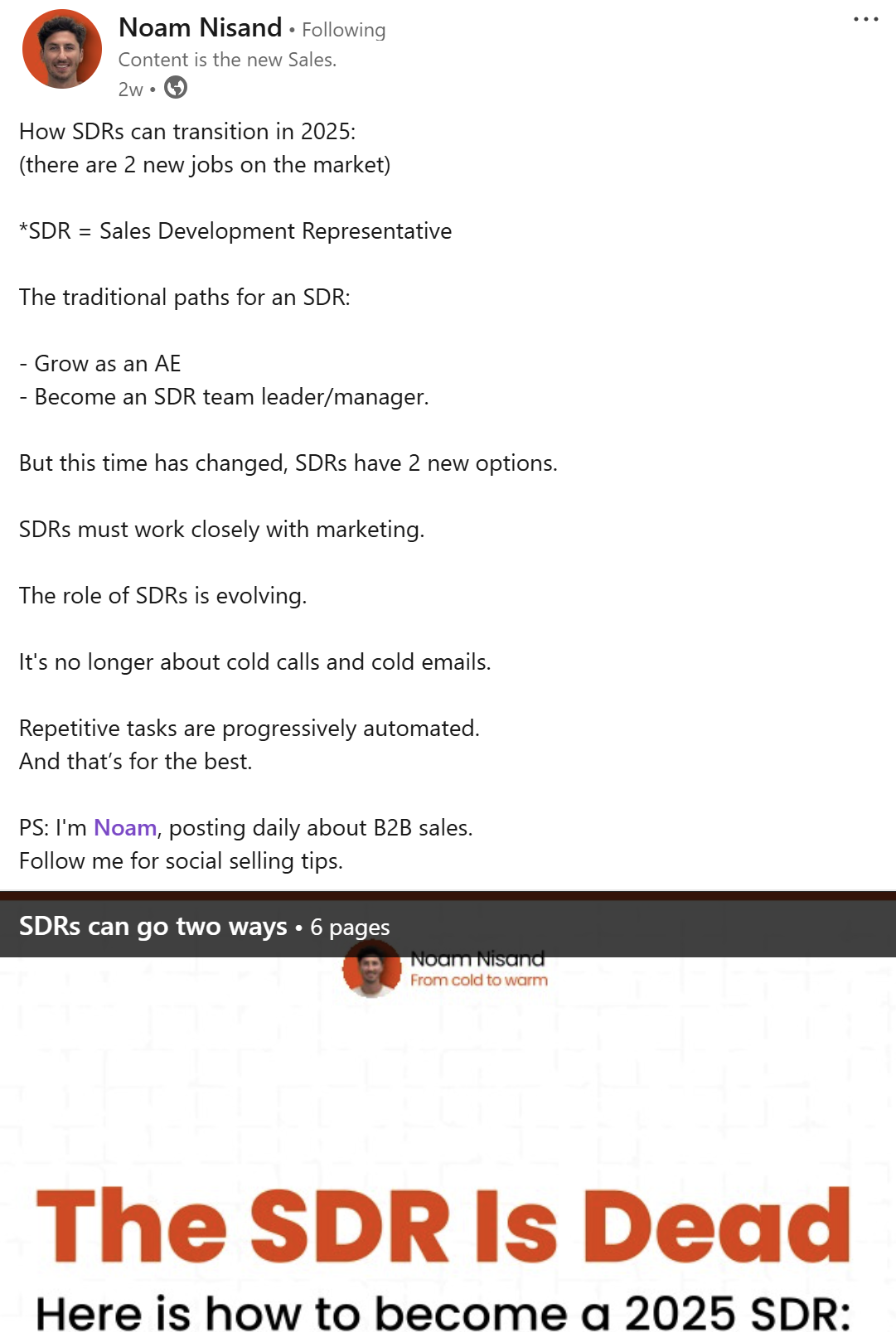
Today, two new opportunities are emerging:
- Technical SDRs: Specialists in tools, automation, and A/B testing. They optimize outreach campaigns, refine messaging, and work closely with marketing to drive booking rates. These SDRs are the “engineers” behind the sales process.
- Social selling SDRs: Focused on community building and content creation, they generate inbound leads and amplify brand presence through social media. They act as in-house influencers bridging sales and marketing.
The future of SDRs lies in blending technical expertise with creativity.
SDR vs. AE
SDRs (Sales Development Representatives) and AEs (Account Executives) play complementary roles in the sales process, each focusing on distinct sales funnel stages.
- SDRs focus on the top of the funnel. Their job is to identify and qualify leads, nurture them through outreach, and pass opportunities to AEs once leads meet qualification criteria. Think of them as prospecting experts who create a strong pipeline for the sales team.
- AEs take over from there, handling the mid-to-bottom pipeline stages. They focus on building relationships, addressing pain points, and closing deals to secure long-term clients.
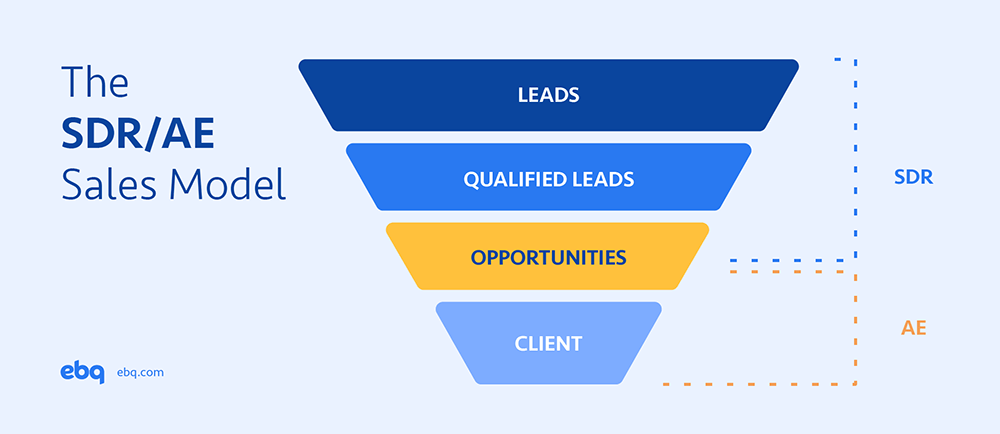
With SDR/AE collaboration, you can generate interest and convert it into revenue seamlessly. It maximizes efficiency and lets each role focus on what they’re best at.
Can AI help SDRs become better at their job?
The answer is yes, as AI tools are transforming the work of SDRs and Business Development Representatives, making their processes faster, smarter, and more efficient.
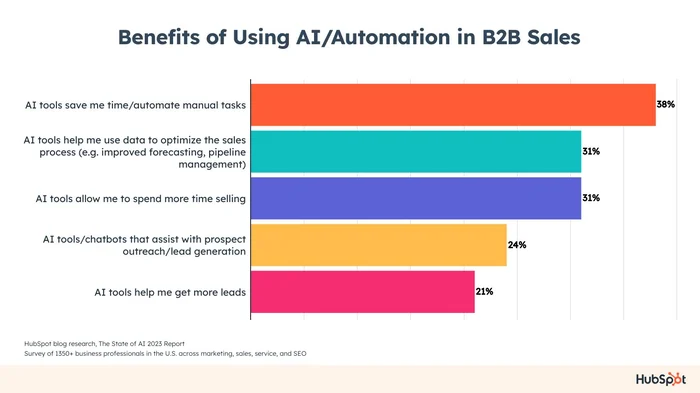
Here’s how AI SDRs and other AI-powered sales tools can make a difference:
- Spot the right leads: Generative AI can analyze patterns in your data to find prospects that closely match your ICP.
- Craft personalized messages: With AI-generated email drafts or LinkedIn outreach messages, SDRs can send tailored and thoughtful messages without spending hours writing.
- Streamline daily tasks: AI can prioritize leads, schedule follow-ups, and even track engagement to help SDRs focus on what matters—building connections.
Here are some top use cases:
| AI Sales Use Case | Description | Recommended Tools |
| Lead generation | Identify and collect potential leads that match your ICP. | AiSDR, Jason AI by Reply |
| Lead enrichment | Add missing information to your lead database, such as email addresses or job titles. | PhantomBuster, Clearbit, Artisan AI |
| Lead qualification | Score leads based on their fit and likelihood to convert. | PhantomBuster, 6sense |
| Personalized sales outreach | Craft and send customized messages at scale to engage prospects effectively. | Outreach.io, Salesforce Einstein |
| Pipeline forecasting | Predict future sales performance based on historical data and trends. | Gong.io, Salesforce Einstein |
| Sales coaching | Provide actionable feedback and guidance to SDRs for improving their skills. | Gong.io, Chorus.ai |
| Sentiment analysis | Understand the emotional tone of communications to gauge customer reactions. | Crystal, HubSpot |
| Meeting scheduling | Automate scheduling with prospects to eliminate back-and-forth emails. | Piper by Qualified, Jazon by Lyzr |
